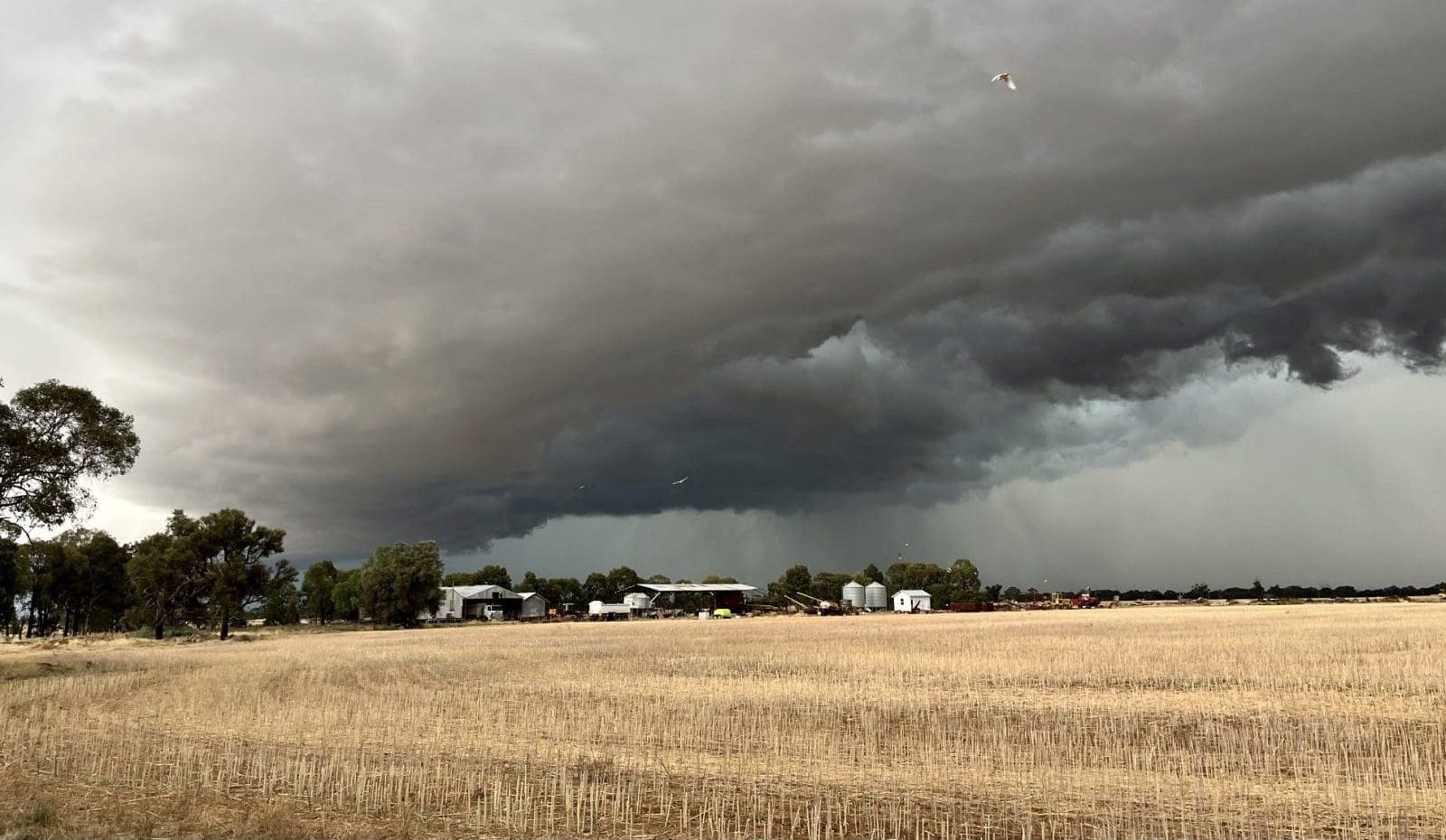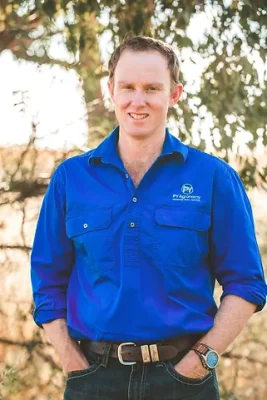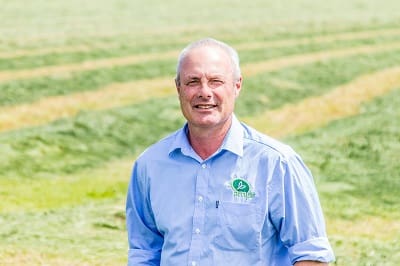
Victoria and southern NSW had a mostly mild and wet finish to a growing season with some concerningly dry patches. Photo: Kate Burke
WITH HARVEST wrapped up for growers in all but the southernmost parts of Australia, two lessons from the 2023-24 growing season loom large.
One is that commercial entities will not hold big stocks of urea to sell in the spot market in a falling world fertiliser market, and the second is that Bureau of Meteorology forecasts are a guide and not the gospel in predicting crop yields.
For growers who underestimated their reserves of subsoil moisture available to cereal and canola crops at planting, and under-ordered urea based on the BoM’s predictions of an El Niño, yield and/or wheat protein paid a penalty.
The same went for growers who could not access pre-ordered urea because demand in south-eastern Australia surged in response to a growing season that was wetter than expected at times.
Nonetheless, some Victorian and southern New South Wales paddocks produced bumper or record yields, and test weights and quality overall were good.
BoM messages need local interpretation
While plenty of “BoM bashing” has taken place in recent months, sources spoken to for this story are on the same page: BoM was close to the mark in its forecast for a dry growing season.
Growers in north-west NSW, which was so dry that large areas were not planted as intended with winter crop, generally made the right call by ordering a modest amount of urea for a year with moisture-limited yield potential.
In the Central West of NSW, growers had enough rain to plant on, and just enough to produce an average yielding crop, and their estimates of urea required were generally correct.
In Victoria and southern NSW, growers generally got a lot more in-crop rain than they were expecting as the BoM seasonal outlooks switched from El Niño Watch in March to Alert in June to declared in September.
Think Agri principal Kate Burke said growers who factored subsoil moisture at planting into their yield forecasts realised their 2023-24 crop had significant potential to benefit from in-crop urea applications.
“Those who had a full profile from the year before, and had urea organised and reviewed their N needs as the season progressed, were able to adjust and capture the potential on offer,” Dr Burke said.
“It wasn’t hard to work out that yield potential was solid, regardless of forecast.
After some hot and dry spells from July to September, a surprisingly mild end to the growing season saw many crops put their final push into yield at the expense of protein, but with little impact on the per-hectare gross margin.
“The prospect of an El Niño and IOD-positive combination, and the increased risk of frost that can occur in those times, did come into play.”
Trade sources say the Victorian harvest yielded an unusually large amount of ASW-grade wheat, up to half the state’s crop, with Hard wheat deliveries well down on average because of the lower protein profile.
“The nature of the finish — fairly cool and a late rain — contributed to increased grain size and that can dilute the protein content.”
One thing growers definitely did not do in the 2023-24 growing season was over-fertilise, and the bonus there was high test weights, as cereals put water and nutrients into filling grain on a manageable number of tillers.
Dr Burke said urea supply issues contributed to some underfed crops, as did “knee-jerk procurement” strategies.
Dr Burke said BoM tools estimating soil moisture can underestimate plant-available water as they do not factor in summer weed control in fallow.
“It’s nuances like this that make broad-brush messaging tricky.
“BOM is trying to message to emergency services and general public, so it needs to talk up the risks to get people prepared for the worst case.
“That type of messaging isn’t always appropriate for farm business decision-making.”
Dr Burke said “BOM bashing” was counterproductive.
“It erodes trust in the best system we have.
“Their Climate Influences updates and summary of multiple models are really informative, and what I rely on to get a sense of possible futures and the odds.”
“The BoM called it as they saw it which was fair enough; they were technically correct.
“It’s up to each individual to know their own rainfall relative to history and know how to interpret probabilistic forecasts.
“It’s up to advisors to understand their patch relative to history as well.
“Climate varies within and between seasons, so monitoring relative to history is crucial, as is building scenarios based on wet, dry or in-between conditions, and constantly reviewing those scenarios.
“Farmers who did that made some really astute money-making decisions in 2023.”
Mixed bag in Central West
With good subsoil moisture from last year, enough planting rain and just enough in-crop rain to get them through, PY Agronomy principal Peter Yelland said crops in the Central West of NSW yielded surprisingly well in most cases.
He said producers who drought-fed sheep and cattle through the last drought were not prepared to do it again once the BoM called El Niño were the ones who lost money by selling into a falling livestock market.
“At the end of the day, we may not have had an El Niño, but we had a very low rainfall year, and I don’t think people were willing to take stock through like they did in 2018-19.
“Through these areas, we definitely had feed deficits through the growing season.”
“There was a level of panic selling from a livestock point of view.”
Mr Yelland said maximum daytime temperatures in July hit 25 degrees Celsius, so on-farm signals as well as BoM messaging spooked some producers.
“Once you see 25 degrees in July, you get worried.”

PY Agronomy principal Peter Yelland.
On his farm at Parkes, Mr Yelland had 100-120mm of in-crop rain, well below the average of 300mm.
“We had an extremely low-rainfall year to the end of November.”
Mr Yelland said those who trade cattle and sheep were hit hardest if they bought in a buoyant market and sold when the BoM outlook and local conditions pointed to drought coming.
“Some people tore up massive amounts of money in the trading game by purchasing high-priced stock on short-term finance options of more than 1pc a month because the margins were there at the time.
“People were paying over $2000 for black steers and tipping them out for $1200.”
For mixed farmers, hanging on to surplus stock because of an abundance of paddock feed in recent years increased their exposure to sheep and cattle price drops seen in spring.
“Nothing builds complacency in agriculture like good seasons.”
Mr Yelland said most of his clients’ wheat crops yielded 2.5-3t/ha, average or slightly above for the district.
“Our protein levels suggest we weren’t low on N.”
“We had quite a bit of APW to H2.”
The returns were respectable, with Mr Yelland citing one client who harvested 2t/ha of H2 to gross $900/ha, and many canola growers getting around 1.5t/ha.
The Lachlan River is the southern boundary of PY Agronomy’s client base, and south of there is where in-crop rain was generally greater, and wheat protein below 10.5pc was common.
“Our area came out better than we would have thought.”
“There was definitely a nitrogen response for wheat, barley and canola, and the success of our crops comes down to the fact they didn’t get big in terms of dry-matter bulk; they didn’t pull a lot of water.”
“In 2020, out of the drought, we had big pools of N and grew a huge amount of biomass, and crops hit the wall with low test weight and screenings.
“Our grain weights were very good this harvest; that means the crops finished and didn’t die prematurely.
He said growers applied nitrogen “hand to mouth”, and mostly post emergence, as they were cautious about overfeeding in a low-rainfall growing season.
Mr Yelland said while storms and showers aplenty have rolled through the region, totals have been very patchy.
For example, the Parkes district has had an astounding 340mm since November, but Cumnock and Manildra have had more like 90mm and dams are far from full.
Expectations matched outcomes in northern NSW
AMPS Agribusiness buys inputs, stores grain and conducts research on behalf of its 600 grower members in the northern half of NSW.
AMPS CEO Nigel Herring said the fall in fertiliser prices seen over last year meant no-one wanted to have a long position over the winter-crop growing season which was forecast by BoM and others to be a dry one, and was.
“Supply has normalised in the past 3-4 months, but I guess the issues we were presented with came out of the outlook.”

AMPS Agribusiness CEO Nigel Herring.
Rain after most of the winter-crop harvest was off in northern NSW has brightened prospects for summer crops, and with ag input prices stabilising at lower levels, Mr Herring said the supply chain was returning to equilibrium.
“The November rain made an enormous impact, and I think suppliers in general were caught out.
“They were a little bit bent out of shape with not wanting to take risk into a drying outlook; that caught us all out a little bit.
“There were lower levels of inventory in the supply chain, but our customers generally were OK.
“We weren’t impacted by the (urea) shortage because we didn’t have the planting, and we didn’t have the top-dressing opportunity the south did.
“Because urea specifically was dropping in value, we probably didn’t see as much pre-plant as we have.”
Mr Herring said the BoM’s forecast for a dry spring may have prompted some to cut back on pre-plant nitrogen and incur a minor yield penalty as a result.
However, he said the BoM forecast was basically on target for the northern NSW winter crop, with 2023-24 not being one of its finest years.
“No-one’s had a brilliant winter crop.”
For further interpretation of the season in relation to BoM forecasts, click here to read the story published on Beef Central on January 11.
Get our free news straight to your inbox – Click here

HAVE YOUR SAY